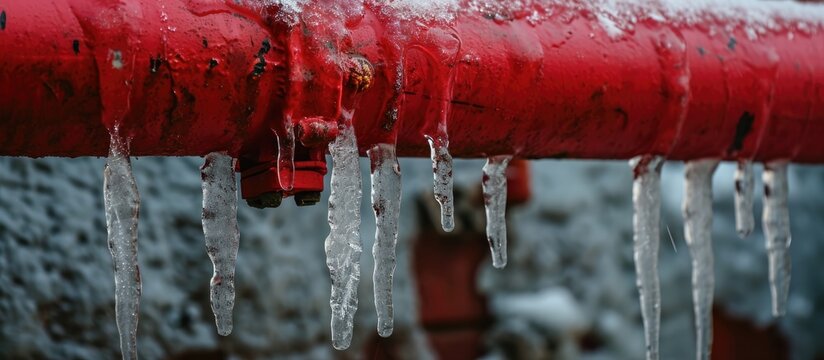Just about every person may have their private perception on the subject of 6 Ways to Prevent Frozen Pipes.

Winter can damage your plumbing, specifically by freezing pipes. Right here's just how to prevent it from happening and what to do if it does.
Introduction
As temperatures drop, the threat of frozen pipelines increases, potentially bring about expensive repair work and water damage. Recognizing how to avoid icy pipelines is critical for homeowners in chilly environments.
Understanding Frozen Pipes
What causes pipelines to ice up?
Pipes freeze when revealed to temperatures below 32 ° F (0 ° C) for expanded periods. As water inside the pipes ices up, it increases, taxing the pipe wall surfaces and possibly triggering them to break.
Risks and damages
Frozen pipes can result in supply of water interruptions, home damage, and pricey repair work. Burst pipelines can flooding homes and create considerable structural damages.
Indications of Frozen Pipes
Determining frozen pipes early can avoid them from breaking.
Exactly how to recognize frozen pipelines
Search for reduced water flow from taps, unusual smells or noises from pipes, and noticeable frost on subjected pipes.
Prevention Tips
Insulating vulnerable pipelines
Cover pipes in insulation sleeves or make use of heat tape to secure them from freezing temperature levels. Concentrate on pipelines in unheated or outside locations of the home.
Home heating methods
Keep interior spaces adequately warmed, specifically areas with pipes. Open up closet doors to permit cozy air to distribute around pipes under sinks.
Shielding Outside Pipes
Garden tubes and outside faucets
Detach and drain yard tubes prior to winter. Install frost-proof faucets or cover outdoor taps with protected caps.
What to Do If Your Pipes Freeze
Immediate actions to take
If you suspect icy pipes, keep faucets open to alleviate stress as the ice thaws. Make use of a hairdryer or towels soaked in hot water to thaw pipelines slowly.
Long-Term Solutions
Architectural adjustments
Consider rerouting pipes far from exterior walls or unheated areas. Include extra insulation to attic rooms, basements, and crawl spaces.
Updating insulation
Invest in premium insulation for pipelines, attics, and wall surfaces. Proper insulation helps keep regular temperatures and minimizes the threat of frozen pipelines.
Verdict
Protecting against icy pipelines needs aggressive steps and fast reactions. By comprehending the causes, indicators, and preventive measures, house owners can shield their pipes throughout cold weather.
5 Ways to Prevent Frozen Pipes
Drain Outdoor Faucets and Disconnect Hoses
First, close the shut-off valve that controls the flow of water in the pipe to your outdoor faucet. Then, head outside to disconnect and drain your hose and open the outdoor faucet to allow the water to completely drain out of the line. Turn off the faucet when done. Finally, head back to the shut-off valve and drain the remaining water inside the pipe into a bucket or container. Additionally, if you have a home irrigation system, you should consider hiring an expert to clear the system of water each year.
Insulate Pipes
One of the best and most cost-effective methods for preventing frozen water pipes is to wrap your pipes with insulation. This is especially important for areas in your home that aren’t exposed to heat, such as an attic. We suggest using foam sleeves, which can typically be found at your local hardware store.
Keep Heat Running at 65
Your pipes are located inside your walls, and the temperature there is much colder than the rest of the house. To prevent your pipes from freezing, The Insurance Information Institute suggests that you keep your home heated to at least 65 degrees, even when traveling. You may want to invest in smart devices that can keep an eye on the temperature in your home while you’re away.
Leave Water Dripping
Moving water — even a small trickle — can prevent ice from forming inside your pipes. When freezing temps are imminent, start a drip of water from all faucets that serve exposed pipes. Leaving a few faucets running will also help relieve pressure inside the pipes and help prevent a rupture if the water inside freezes.
Open Cupboard Doors
Warm your kitchen and bathroom pipes by opening cupboards and vanities. You should also leave your interior doors ajar to help warm air circulate evenly throughout your home.

Do you like reading about Helpful Tips to Prevent Frozen Pipes this Winter? Put a remark below. We would be delighted to listen to your feelings about this piece. Hoping to see you back again before long. Kindly take the time to promote this blog posting if you enjoyed reading it. I thank you for your readership.
Estimate
Comments on “Essential Tips to Avoid Frozen Pipes in Cold Weather: Expert Insights”